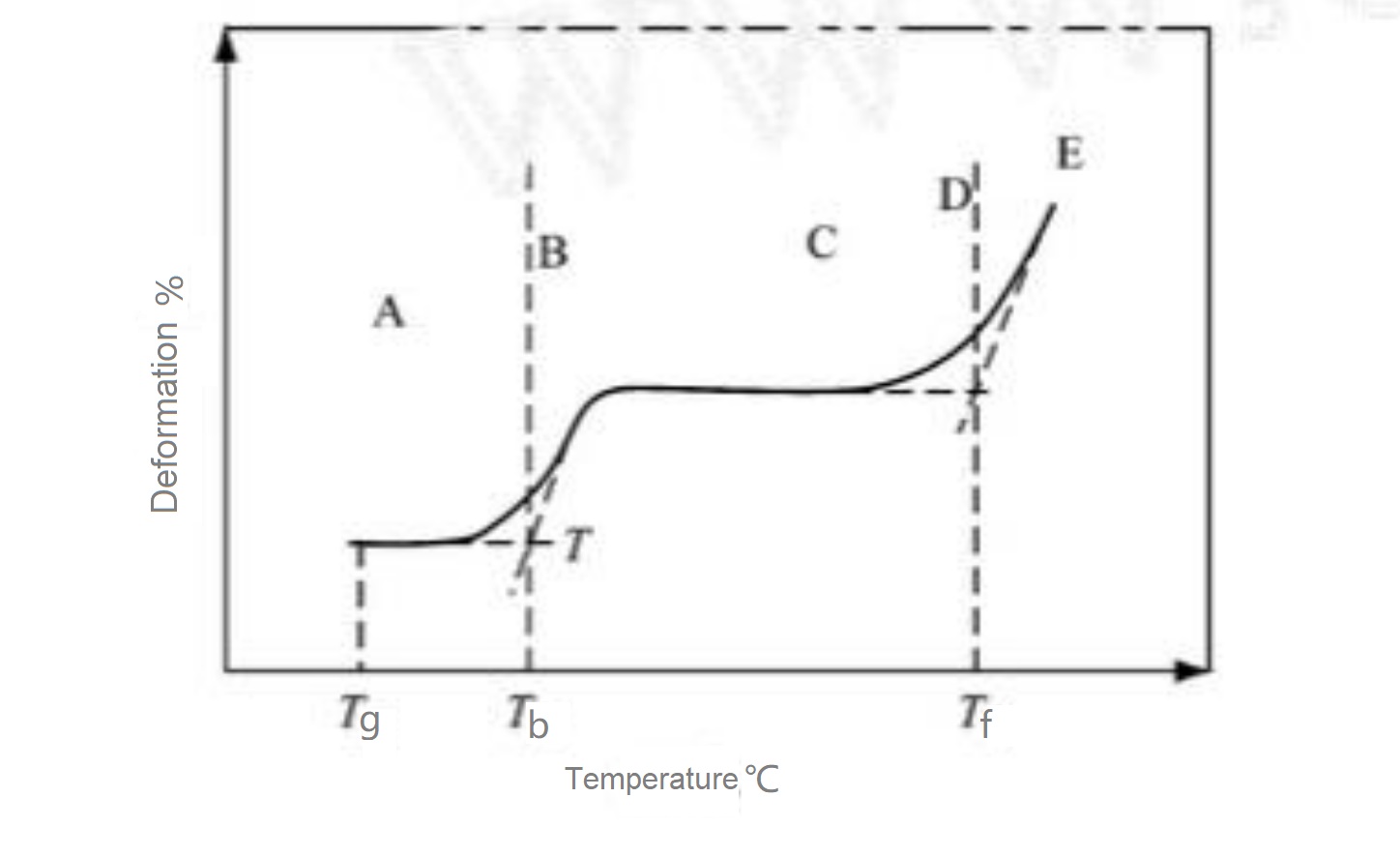Reprinted from Rubber Technology Network
Glass transition temperature(Tg) and brittle temperature(Tb) are the corresponding temperatures when the mechanical properties of polymers (including rubber) undergo a morphological mutation at low temperatures. This mechanical behavior can be characterized by deformation under external force. Assuming that a fixed load is used to measure the deformation of the rubber when the temperature changes suddenly, it can be divided into five partitions: A, B, C, D, and E as the temperature increases from low to high, as shown in the figure:
Figure 1, Changes in rubber deformation when the temperature changes

In Figure 1, the temperature of zone A is between the glass transition temperature Tg and the brittle temperature Tb. In this range, the rubber is in a glassy state, and only a small part of the chain segments, side groups, side chains and smaller chain nodes can rotate internally, that is, the rubber molecules can only vibrate in situ, and the deformation is extremely limited. The temperature of zone C is between Tb and Tf (viscous flow temperature). In this range, the rubber is in a highly elastic state, and when subjected to external force, the deformation is large. When stretched, the molecular chain changes from curled to straight, and when the external force is removed, the molecular chain returns to the curled state. This deformation is called high elastic deformation or elastic deformation. At this time, the rubber is soft and elastic. When the external temperature rises to Tf (viscous flow temperature), the rubber enters zone E, and its state changes from a highly elastic state to a viscous flow state (high viscosity fluid state). At this time, when the rubber is subjected to external force, the entire molecular chain and local segments move, and the deformation is very easy and strong, and the deformation is large and irreversible. This deformation is called plastic deformation.
B and D in the figure are two narrow transition zones, where zone B is the transition zone from zone A to zone C; and zone D is the transition zone between C and E. Therefore, the glass transition temperature Tg represents the specific temperature when the rubber reaches the glass state. In zone A of Tg-Tb, although the rubber is in the glass state, its glass characteristics are incomplete and incomplete, because it still has a slight deformation under the action of external force. Therefore, the glass state and the glass transition temperature cannot be confused. The correct concept should be that Tg is the specific starting temperature when the rubber completely loses its elasticity; and the glass state is the state of the rubber at low temperature, close to the glass state but still retaining a slight elasticity.
The temperature point corresponding to the other end of zone A is the brittle temperature Tb, and its physical meaning is the highest temperature when the rubber breaks under external impact. In other words, if the external temperature is higher than this point, the external force impact will no longer cause it to break. It is more practical to use the brittle temperature to measure the low temperature performance of rubber, because above this point, the rubber enters a highly elastic state, and the glass transition temperature is the lowest temperature limit for rubber to retain elasticity. Below this temperature, the elasticity disappears completely. Therefore, for cold-resistant rubber, the brittle temperature Tb is always used as the assessment indicator instead of the glass transition temperature Tg.
